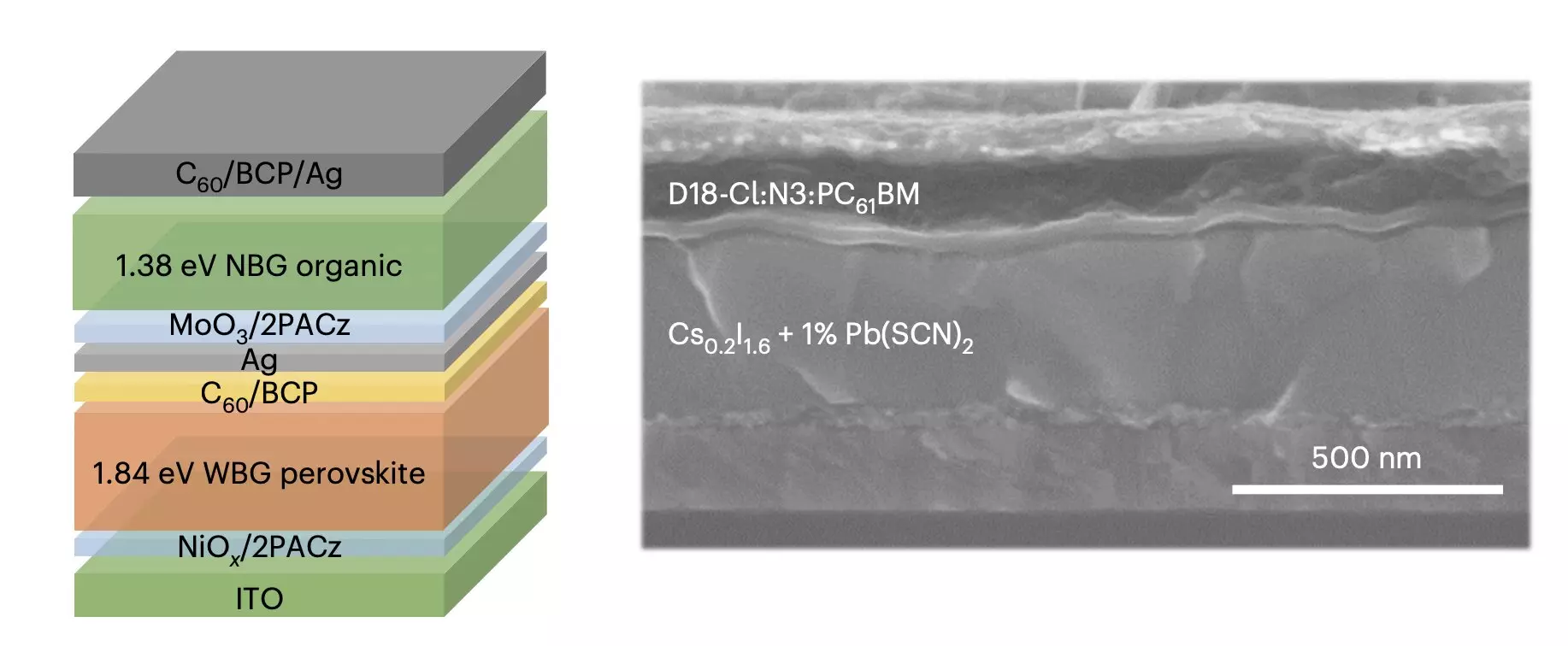Solar cell technology has come a long way in recent years, with researchers focusing on developing more efficient and cost-effective designs to facilitate their widespread deployment. One of the most promising advancements in this field is the development of organic solar cells based on perovskite materials. These cells have shown several advantages over traditional silicon-based solar cells, including lower fabrication costs, enhanced flexibility, and greater tunability. Despite these advantages, organic solar cells have a lower maximum certified power conversion efficiency (PCE) of 19.4% compared to silicon solar cells.
A proposed strategy to enhance the efficiency and stability of organic solar cells involves combining them with cells based on mixed halide wide-bandgap perovskites, creating perovskite/organic tandem solar cells. While these tandem solar cells have the potential to achieve high PCEs and stabilities, their performance is hindered by a phenomenon known as phase segregation. This process degrades the performance of wide-bandgap perovskite cells and negatively impacts recombination processes at the interconnecting layer of the tandem solar cells.
Researchers at Soochow University’s Suzhou Key Laboratory of Novel Semiconductor-optoelectronic materials and devices recently proposed a novel strategy to suppress phase segregation in wide-bandgap perovskites, thereby improving the performance and stability of perovskite/organic tandem cells. This innovative approach involves incorporating a pseudo-triple-halide alloy into mixed halide perovskites based on iodine and bromine. The researchers found that the introduction of pseudo-halogen thiocyanate ions into the perovskites prevented halide elements from segregating, ultimately enhancing crystallization and reducing grain boundaries.
By incorporating thiocyanate ions into the perovskite lattice and forming an alloy with iodine and bromine, the researchers were able to block halide ion migration and slow down crystallization, facilitating the movement of electric charge within the solar cells. This approach not only prevented halide phase segregation but also reduced energy loss in the wide-bandgap perovskite cells. In initial tests, the researchers applied this strategy to the development of perovskite/organic tandem solar cells, which achieved an impressive PCE of 25.82%, a certified PCE of 25.06%, and an operational stability of 1,000 hours.
Looking ahead, the methodology introduced by Zhang, Chen, and their collaborators has the potential to be adapted and applied to a variety of wide-bandgap perovskites with different compositions. This could pave the way for the development of new perovskite/organic photovoltaics that are stable under varying light intensities, exhibit high PCEs, and are capable of operating for extended periods before experiencing deterioration. By addressing the challenge of phase segregation in wide-bandgap perovskites, researchers are advancing the field of solar energy and bringing us closer to a sustainable future powered by efficient and stable solar cells.


Leave a Reply